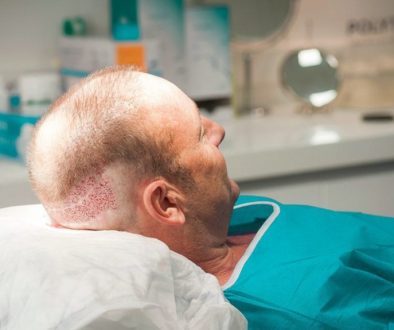What Length Should I Cut My Hair After A Hair Transplant
I want to have a hair transplant, but I am not sure what length I should keep the sides and top can you help me?
Knowing the proper length to wear ones hair is essential for maximizing the result of a hair transplant result. If the hair is too short, the layering effect is diminished and thus the hair will appear thinner because more scalp will be visible. Conversely, if the hair is too long the hair will appear thinner because longer hair tends to clump together thus exposing the scalp and making it more visible.
Finding the right length that allows the hair to have volume and feather over one another without clumping together is crucial in creating an appearance of fullness. However, this principal is not only applicable to the hair on the scalp, but also in the donor site. Depending on the harvesting method Follicular Unit Excision (formerly known as Follicular Unit Extraction FUE) or Follicular Unit Strip Surgery (FUSS) the way the hair should be worn to conceal the scars is different. For FUSS or strip surgery patients should wear their hair long enough to conceal the strip scar however, the exact length can vary from patient to patient because the visibility and thickness of the scar varies from patient to patient. Generally, FUE patients should cut their hair short enough to conceal the scars, but long enough to mitigate the loss of density. Typically, most FUE patients can cut their hair as short as a #1 on the sides without exposing scars or a loss of density, but this can also vary from patient to patient.
Hair restoration patients should experiment with various hairstyles and lengths to find their desired style. Additionally, patients have the ability to grow their hair longer than before their procedure because newly transplanted hair is healthy and grows longer than miniaturized thinning hair. Thus, providing patients with a variety of different styling options.
In conclusion, the length patients should wear their hair is dependent on different variables such as the harvesting method, hair characteristics (color, texture, thickness), level of hair loss and desired hair style. Having a good hairstyle is imperative for maximizing a hair restoration procedure. The best hairstyles for hair transplant patients feather or layer the hair over one another so light does not reflect of the scalp thus creating a fuller denser head of hair. Some trial and error is required to find the “sweet spot” in terms of length and hairstyle for each individual patient.
Written and published by,
Melvin- Editorial Assistant and Forum Co-Moderator Follow our Social Media Instagram @hairtransplantnetwork1 Facebook, Pintrest, Linkedin and YouTube.




